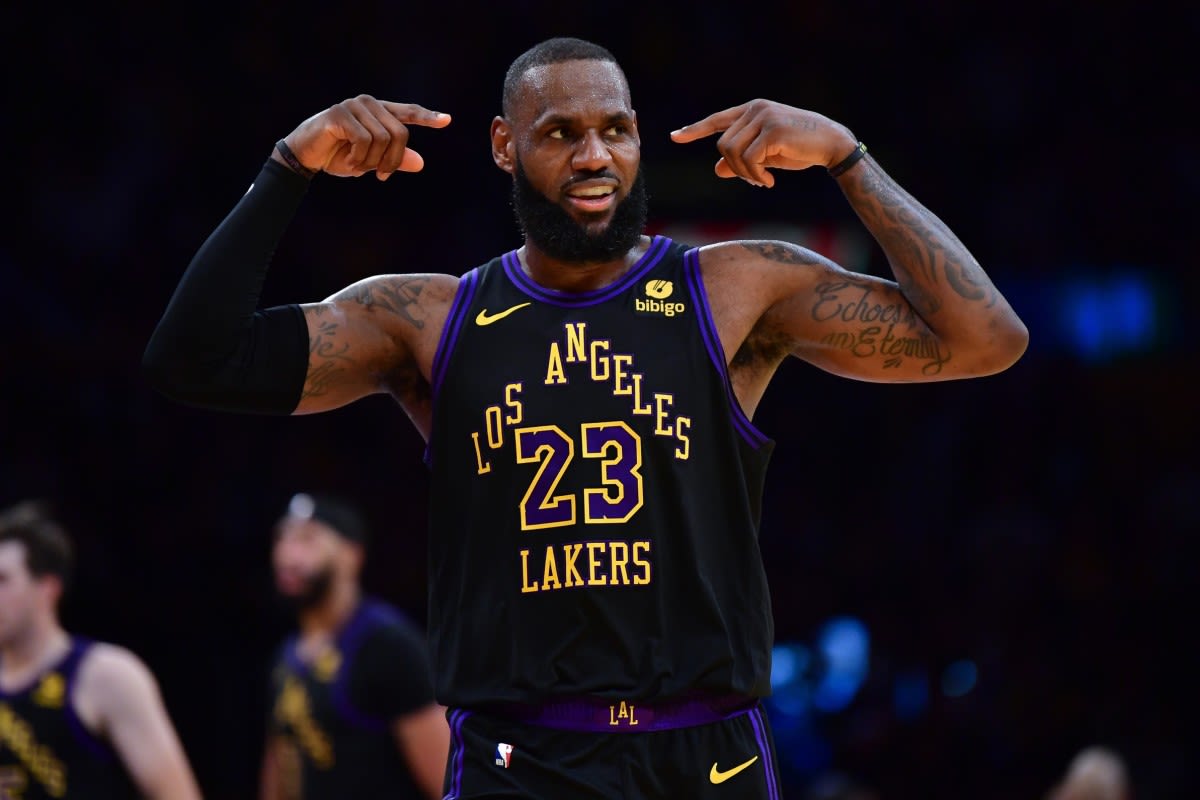The Outlaws.
No, wait … the Bandits.
Hold on, I’ve got it: the Las Vegas Sinners.
The NBA is back in Las Vegas this week for the Final Four of its in-season tournament, which is a good reason to wonder why the NBA isn’t actually in Las Vegas. Sure, the Summer League has been a fixture in Sin City since 2004, while the IST will likely be there for years to come. And commissioner Adam Silver is fond of pointing out that it was the NBA, in 2007, that actually took to Vegas first.
Still, the NBA is not there, while the other major sports leagues are either already there (NHL, NFL) or headed that way (MLB). And that probably drives Silver & Co. crazy. The NBA likes to lead: on innovation … on technology … on social issues. When COVID-19 shut down the sports world, it was the NBA that first brought it back. When it comes to Vegas, the NBA is late to the game.
There are reasons, of course. Let’s start with that ill-fated All-Star Game, which former Vegas Mayor Oscar Goodman called “a disastrous weekend.” The game was fine, though it was played at the Thomas & Mack Center, a less than state-of-the-art arena. Visitors flooded into the city, overwhelming hotel security and local police. More than 400 people were arrested. Traffic jams clogged the Strip. As a local bartender told the Las Vegas Review-Journal, “It was really the first time things had lost control.”
When the league left, it wasn’t eager to return. But there were other reasons. In 2004, the NBA restored Charlotte to its ranks, creating the Bobcats. It was the 30th team—and the league, concerned about talent dilution, wasn’t looking to add any more. There were rumored relocations—and I guess the Nets technically did relocate from New Jersey to Brooklyn—but nothing materialized. Even as interest in Vegas grew, the NBA’s options were limited.
That’s changed. “We’re going to get there,” a league official told Sports Illustrated. And I believe it.
Vegas, with a population north of two million, has become a thriving market. The Golden Knights, which the NHL plopped down in 2017, are wildly popular, drawing crowds at 103.9% capacity. That’s not a typo. 103.9%. The Raiders, which moved from Oakland in ’20, are at the bottom of the NFL’s attendance rankings but still draw more than 62,000 fans per game. The baseball stadium, which is still in the planning phase, will be scaled to hold in the neighborhood of 33,000.
The NBA is coming. The league has resisted calls for expansion in recent years, citing the need to complete a new collective bargaining agreement (that’s done) and a new media rights deal (that’s coming). The NBA will likely expand by two teams, and the league isn’t hiding that Las Vegas and Seattle are the front-runners.
“I made no secret out of it,” Silver said. “Las Vegas is one of those markets we’re going to look to. I know that the fans in Seattle have wanted us to get back there forever. No commitments, you know, to anyone. But we’ll certainly be looking at those two markets.”

Gary A. Vasquez/USA TODAY Sports
And probably soon. On Wednesday, LeBron James reiterated his interest in co-owning a team in Vegas. “Hopefully I can bring my franchise here one day,” James said. “That’s the ultimate [goal].” Gerry Cardinale, the managing partner of RedBird Capital, which owns minority stakes in James’s business interests, including SpringHill Company and Uninterrupted, said this week he was interested in partnering with James on an expansion team.
And there will be others. Tim Leiweke, the former MLSE and AEG exec who is now CEO of the investment firm Oak View Group, is planning a $3 billion, privately funded campus on 25 acres of land south of the Strip that would include a 20,000-seat basketball arena. And while Silver insists the league isn’t taking meetings with prospective Vegas owners, there will be plenty of deep-pocketed billionaires prepared to pitch him when he does.
So get ready for the Gamblers, the Blackjacks or the Card Counters.
Whatever. They will figure it out.







